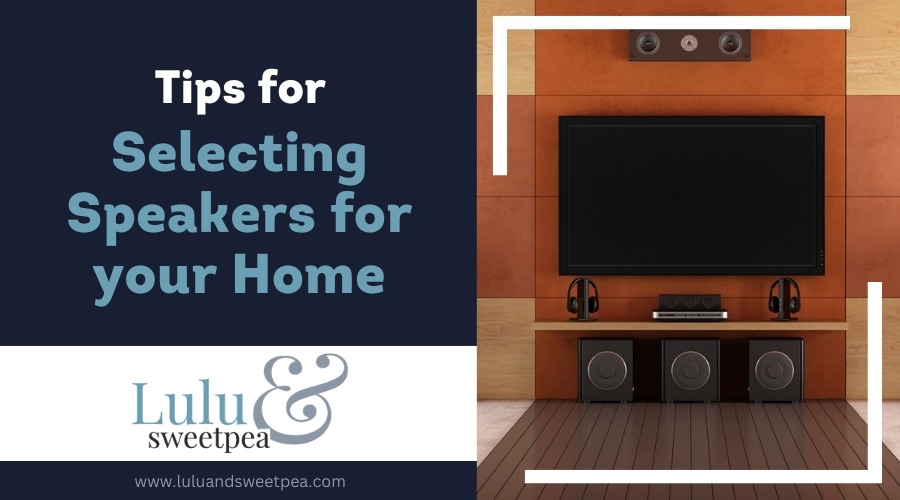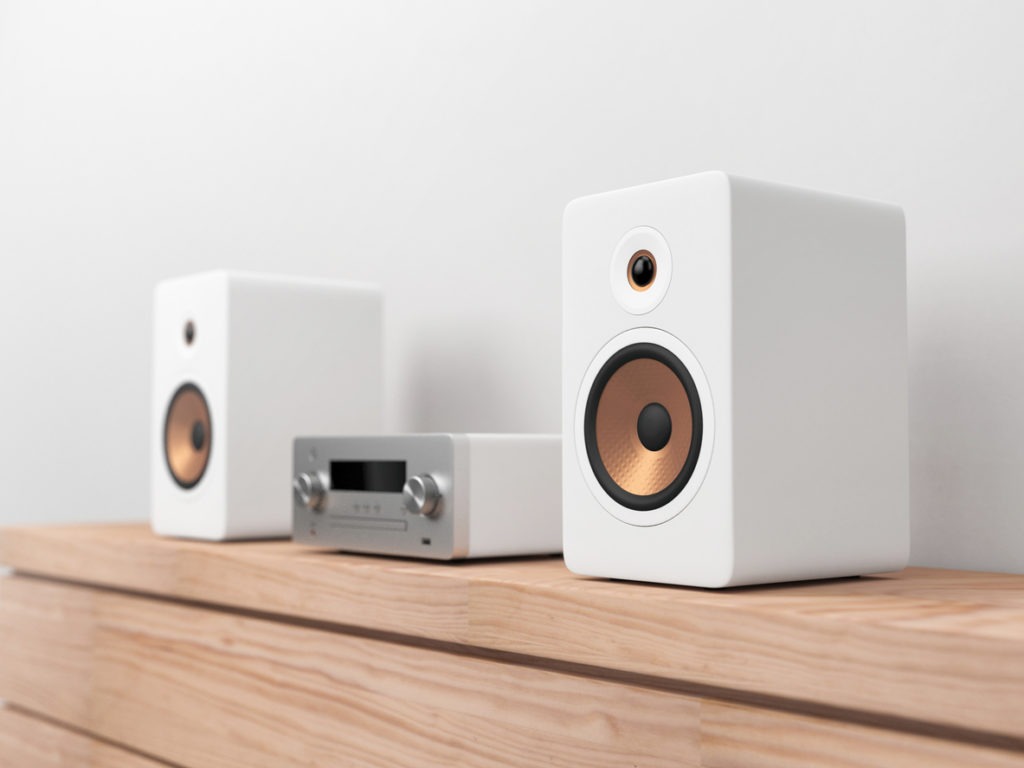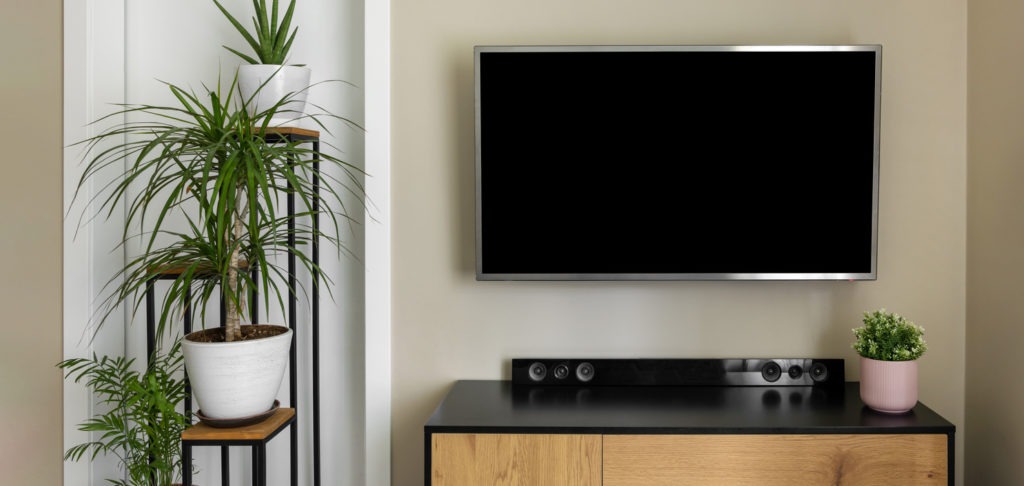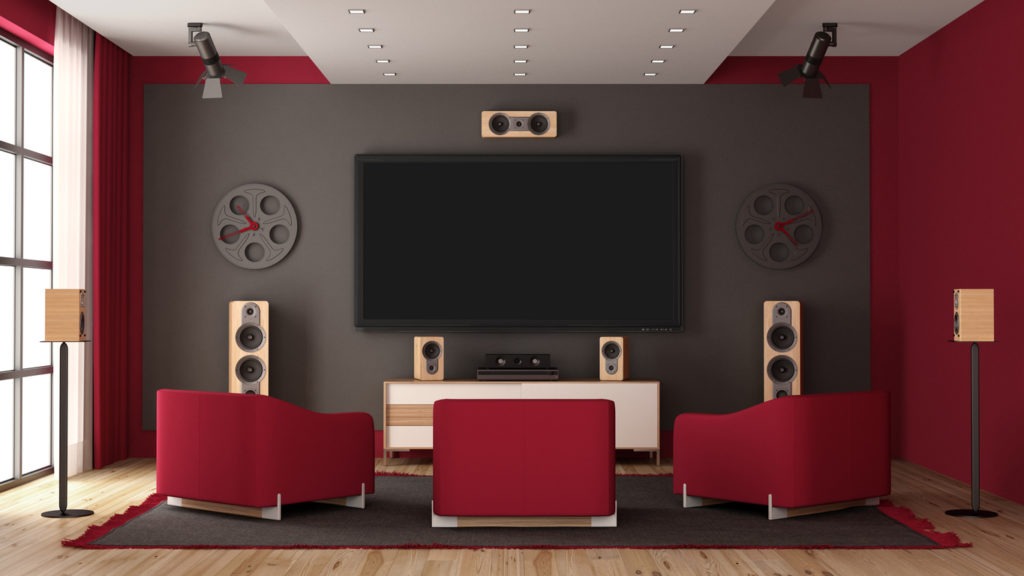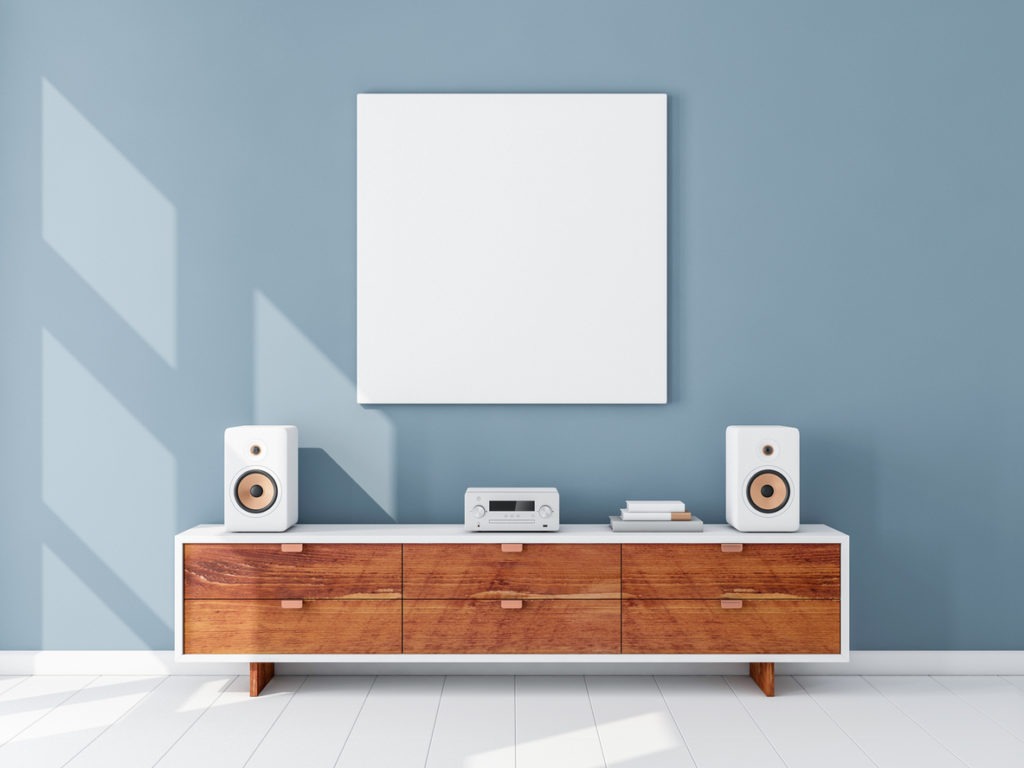Having the right speakers is essential to any home as it helps provide the best movie and music experience for you and your family. Without the perfect set, expect that everything will be less fun and exciting due to poor sound quality delivered by regular monitors and TV.
But with the seemingly endless list of options available in the market, it can be a daunting task to find the speakers for your home. There are a lot of considerations that you need to ensure that you get your money’s worth and the ideal speakers for your needs.
Ease your worries, though! We’re here to help you on your journey to selecting the right speakers for your home. This guide breaks down all the necessary information you need to know to end up with a smart decision when shopping for your new audio setup.
Types of Speakers
As you browse online or visit any audio shop, you’ll find different types of speakers, each of which has its purpose. Knowing them can excellently help in narrowing down your choices and finding the exact speaker to suit your necessities. So, take a look at the various types of speakers to choose from:
1. Floor-standing Speakers/Tower Speakers
As the name implies, floor-standing or tower speakers are speakers placed on the floor, usually erected about three to four feet off the ground. Though there isn’t a direct correlation between speaker size and sound quality, larger speakers are typically equipped with larger cones that allow increased volume, better low frequencies, and more bass.
With that, floor-standing speakers generally deliver one of the best audio qualities, characterized by richer, louder, more powerful sound. They are the best fit for larger spaces, with a pair usually enough to cover the entire room.
2. Bookshelf Speakers
Bookshelf speakers are smaller alternatives for tower speakers, meant to be used for smaller spaces. They typically sit on a bookshelf but will provide better sound quality on a speaker stand as it prevents the shelf from absorbing all the sound that the speakers deliver. A pair of these bookshelf speakers are ideal for surround sound systems, where they act as front and rear speakers. Plus, they also work great in stereo sound setups. Though bookshelf speakers have a limited bass response, partner them with a subwoofer and you can entertain yourself with far-ranging sound frequencies.
3. Subwoofers
Subwoofers are speakers that deliver lower frequencies, ranging from 20-200 Hz. They provide deep, rich bass notes that normal two-channel or surround sound systems cannot offer. Subwoofers allow you to feel the sound, making it more desirable to listen to bass-banger EDM or hip-hop songs or watch full-throttle action movies.
4. Center-Channel Speakers
Center-channel speakers are a vital component of a surround sound system. They are situated between the front left and right speakers and are responsible for delivering the majority of the dialogue from television shows and movies. As they are normally placed in the center, it’s practical that they are designed to produce mid-range frequencies. Without them, you won’t fully enjoy whatever you’re watching.
5. Satellite Speakers/Surround Speakers
Satellite or surround speakers are speakers that sit off the side or behind your listening area. These smaller speakers generally have two cones, usually a mid-range driver/woofer or a tweeter. Rather than being the main attraction, their main purpose is to redefine the audio experience by complementing the other speakers in the system.
Satellite speakers are usually mounted to the ceiling or wall to prevent pesky cables in the listening area. While there are wireless alternatives, they’re not completely wireless as they need to connect to an outlet for power. What’s eliminated are the signal wires between the speakers and receiver, which are replaced by a built-in wireless receiver.
6. Soundbars
Soundbars are your best bet if you want an easy and more affordable way to enjoy better audio quality in your home. They are an all-in-one speaker system with a plug-and-play operation that delivers high-quality sound without requiring much space. These long and slender speakers also veer away from the complexity and higher cost entailing the installation of a surround speaker setup.
7. In-Wall Speakers
In-wall speakers are for people who want a discreet alternative to huge traditional speakers. As their name suggests, they are incorporated into the wall to save up interior space without sacrificing audio quality. Acting as rear surround speakers, they provide a truly immersive sound experience. Meanwhile, in-wall speakers are also used as a stereo pair in secondary locations around the house, such as the bedroom or kitchen.
8. In-Ceiling Speakers
In-ceiling speakers are another type of built-in speaker intended to hide speakers from sight. They also feature a woofer and a tweeter and are placed in any ceiling above the listening area. Unlike in-wall speakers, they offer better camouflage feel as they are kept away from the standard field of view. They are best for multi-room audio setups, allowing you to place suitable background music all the time outside of your primary listening area.
9. Portable Speakers
Portable speakers are small speakers enough to fit in your pocket or backpack and are intended for both indoor and outdoor use. They use Bluetooth wireless technology, allowing you to easily stream music from your laptop, smartphone, tablet, or any other device. They are known for their ruggedness, battery life, and portability, and you can use them whether you want to listen to music in your room, in the garden, or at the beach.
10. Outdoor Speakers
Outdoor speakers are speakers specifically designed to withstand outside elements while still being able to project loud, high-quality sound in open spaces. You can use them to enjoy music while relaxing in the backyard, watering your flowers, cooking on the grill, or doing other work. Some outdoor speakers are mounted in-wall or in-ceiling, while others are concealed from plain sight, such as outdoor rock speakers.
11. Smart Speakers
Smart speakers are all-in-one devices that transcend a speaker’s function to playback music. These speakers are connected to your home network and work via a built-in virtual assistant feature, which you can then control using voice commands or through an app on your smartphone. Aside from playing your favorite music, you can use it to get information about the weather or traffic conditions or perform common household tasks like turning the lights or adjusting the thermostat.
Tips for Selecting Speakers for your Home
Now that you’re aware of the different types of speakers, it’s time to delve deeper into the steps you need to take to ultimately select the right speakers for your home.
1. Establish your budget
Whether it’s getting a house or buying a new car, the price is always a significant part of the equation. That should be the same when you’re on your speaker-purchase journey, given that speakers themselves can be a hefty investment.
While the range of cost for speakers is fairly extensive, varying from cheap to pricey, note that you should also take note of the money you need to spend on amplification, wiring, and installation. For instance, some speakers will need you to shell out a few hundred dollars, while others may require a thousand more, depending on the complexity of your setup.
With that, it’s crucial that you decide on your budget. Establishing how much you’re willing to spend will help you limit your search, which is much easier rather than checking what’s available out there first before distinguishing your budget.
Meanwhile, you should also learn to allocate your money. Spending 95% of your budget on the speakers alone is a waste, leaving you nothing for the installation and setup. Remember, however, that you should also consider future-proofing. Buying cheaper speakers can be good for your wallet short-term but can turn out to be disastrous once they reveal their true quality, requiring you to spend more for replacements.
2. Check the size and how open the room is
Another important aspect to consider is the size of your listening space. Be wary that the size will help you determine which certain type of speaker should go with the room.
For instance, smaller speakers are obviously your best option if you wish to get a speaker for your small, closed-in bedroom with walls on all sides. Getting a large speaker isn’t ideal as it will take up lots of space and will drown the room with too much bass, making it pretty uncomfortable.
On the other hand, a large, open room will need a larger speaker for a more solid, immersive sonic experience. If you get a smaller speaker, expect that it will sound small and localized. A speaker will perform best if it fits the size and openness of the space. Be sure to check out the Sony Z9F as well!
3. Decide on the purpose
You should also establish the purpose of why you’re buying speakers in the first place. To make it easier, spend a moment thinking about your listening habits. If you primarily listen to music alone, a pair of in-wall speakers or bookshelf speakers should already suffice. If you’re craving more bass, adding a subwoofer will deliver that extra thump.
If you occasionally watch movies or TV with your family, a soundbar plus a subwoofer is an ideal choice. However, if you’re a movie buff, you should start considering setting up a surround sound system for higher volumes, more bass, and better dynamics for a full movie experience. Or, you can get a pair of tower speakers if you just simply want to beef up the sound in your home. If you’re throwing a weekend party, your little bookshelf speakers won’t obviously be enough and you need bigger speakers to pump up the night.
4. Know the speaker’s frequency response
A speaker’s frequency response is a measurement of the range of sound selection it can deliver. The human ear is capable of detecting sounds from 20 Hz to 20 kHz, from lower to higher tones. Speakers usually offer a frequency range of 50Hz to 20kHz, while subwoofers cover the lower frequencies.
As it’s an important measurement that can make or break a speaker system, it’s common to think that manufacturers and brands will outrightly include the details in the manual and product description. Sadly, that’s not the case. It’s the tech reviewers that usually make the graph, which you then need to manually search. A good speaker system should ideally reproduce all the frequencies between 20 Hz and 20 kHz.
5. See the speaker’s sensitivity rating
A speaker’s sensitivity (often referred to as speaker efficiency) is a measurement used to determine the ability of the speaker to convert power into acoustic energy. In a nutshell, it’s the power you need to allow your speaker to function properly. It is usually expressed as a specific number of decibels (dB) over 2.83 V input, such as 86 dB/2.83V or 88 dB/2.83V.
In general, a speaker’s sensitivity has a huge effect on the sound quality. 88dB is regarded as average, while 84dB is considered low and where the impact on the quality of sound is usually noticeable. For a better sonic experience, buying speakers with 88 dB or higher is preferable. Models with 92 dB sensitivity or above are already considered high performers when talking about speaker sensitivity.
6. Take note of the speaker’s power handling and impedance
Let’s further explore the technical side by tackling the speaker’s power handling and impedance, which are two other important aspects of a speaker’s performance.
Though the speaker needs power from the amp, there is some form of resistance applied to the electrical signals. It might be surprising, but resistance is critically important. Otherwise, the amplifier will keep supplying power and eventually burn out.
A speaker’s impedance is measured at ohms, with most popular loudspeakers rated at 8 ohms. It is also the safe impedance to look for, given that you’ll most likely have difficulties running low-impedance speakers rated at 2 or 4 ohms.
If you run a 2 or 4 Ohm speaker, you need to match it with an amplifier that can do so safely. If you run a 6 Ohm speaker, you just need to match it with a well-powered amp so you won’t have any problems running it.
On the other hand, power handling refers to how much continuous power the speaker needs without taking any damage thermally or mechanically.
If the speaker is rated at 100 Watts maximum and your amp is rated at 200-Watts per channel, don’t fret. You’ll most likely won’t supply that much power to your speakers. Truth to be told, what causes damage among speakers is using a less-powered amplifier and pushing it to distortion or clipping levels.
7. Confirm that the speakers are run-in
Moving on from the technicalities, it’s now time to test the speakers. One of the first things to know when visiting the audio shop is if the demonstration speakers are run-in. Running in means letting the speakers play over a period of time, allowing all the parts to warm up, stretching out all the spider fabrics, and making them more flexible and free.
It’s similar when buying and wearing new shoes when you stretch them to match and fit the shape of your foot. By running in speakers, the speakers get their stride and reach their maximum performance. Some speakers may only take 24 hours, while others may need up to 100 hours. So, if the sound is quite disappointing, it’s possible that the speakers you’re checking have not yet been properly run in and are not yet of their true potential.
8. Listen to the songs you’re familiar with
Another key to buying the right speakers is by testing them using songs you know by heart. If possible, take a playlist with you. It will be easier to judge a speaker’s performance if you’re playing songs you are truly familiar with. You’ll know the song’s momentum, dynamics, and arrangement so any snag on the speakers’ sound quality will be easily noticeable. You’ll quickly and effectively determine if the speaker is able to play the song faithfully.
9. Test the speaker using your own electronics or device
As much as possible, it’s also recommended to test the speaker using the same electronics or device you sound at home. For instance, if you’re using a modern amplifier and the shop uses an obscure one, chances are the speaker won’t deliver the same quality, affecting your expectations. With that, try to see if the dealer can provide a system that’s quite similar to the one you use at home. That goes the same when buying portable speakers. If you intend to play music through your smartphone, you better test it on your smartphone. That way, you can avoid getting disappointed when you finally bring the speakers home.
10. Bring an extra pair of ears
While you can trust your own ears, other elements can trust your judgment. Maybe you’ve partied all night, are in a bad mood, or are just too excited to buy speakers, which can greatly cloud your perception of a speaker’s performance.
With that, it’s always to have someone with you, a spouse, teenage child, or friend, who you can exchange thoughts with when evaluating a particular speaker. A speaker may be good for you but isn’t for your wife. Your teen may favor a specific model, but you prefer another.
There may be different opinions, but it is necessary for you to strike a balance. Through that, you can avoid making rash decisions, which you’ll only regret sooner or later.
11. Be receptive to other recommendations
Prior to visiting an audio shop, you’ve most likely searched on the web or skimmed magazines for a pair of speakers. There’s nothing wrong with having your personal preference, but locking your eye on that sole model is where the mistake comes in.
Always be open to recommendations. Dealers know their products wholeheartedly, and they know which products are best suited for your home and audio system. It doesn’t necessarily mean that you should abruptly take their word, but make sure to be open and hear any insights they have to share.
Value what they’re saying. Who knows? You might be surprised how a five-star speaker in the magazine can be outgunned by a four-star speaker recommended by your dealer.
12. Shop online
If you intend to buy speakers online instead, be mindful that you won’t be able to enjoy the benefit of touching, hearing, and testing the products you’re interested in. Yet, it doesn’t mean that you should refrain from shopping online. In fact, there are lots of high-quality speakers available online that also come at more affordable prices. As they ship directly to buyers, there’s less cost for them, which in turn becomes discounts for their customers.
Just make sure to read the reviews and watch demos online to evaluate the product. Also, devote extra patience as you wait for your speakers to arrive and wish that they won’t get damaged in transit. Should they get damaged and the speakers fail to meet your expectations, you’ll be glad to know that many companies cover exchange/return shipping and have decent and fair returns policies.
13. Match the speakers to the style of your home
You’ve probably spent a lot of time and money beautifying your home. So, never let a pair of unfitting speakers ruin whatever you have already invested. Always try to find speakers that will complement the look of your living room, bedroom, patio, home office, or backyard. The good news is that speakers are now available in a variety of designs, colors, textures, and finishes, making it easier to find the perfect match for your home. Believe us, no matter how awesome your speakers are, you will likely regret buying them if you cannot stand the sight of them in your space.
Takeaway
Starting your search for the right speakers in your home will be a breeze by following these tips. Just take note of the important points and steps and you’re closer to finding the ideal speakers that will bring your home optimum entertainment and unrivaled sound experience. Happy listening!
